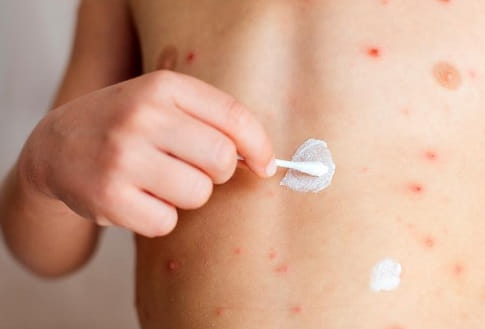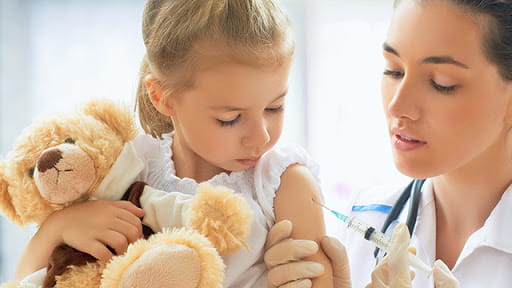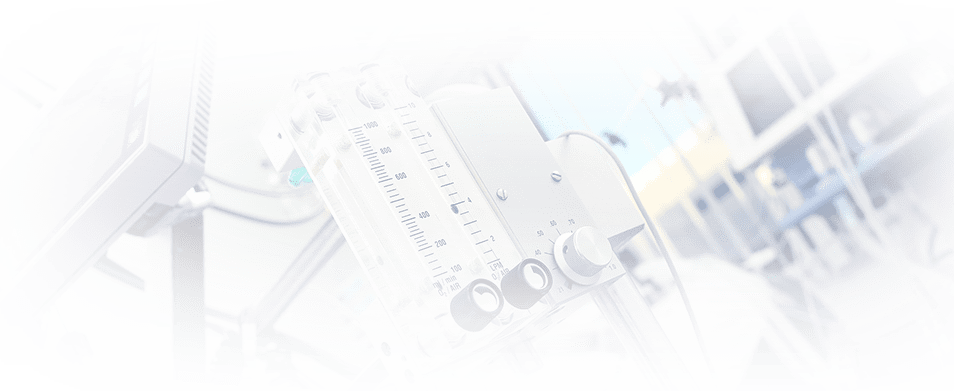Rubella
Rubella is an acute infection of a viral nature, which manifests itself in the form of characteristic rashes throughout the body except for the palms and feet, as well as general intoxication of the body to a moderate degree against the background of concomitant enlargement of the lymph nodes and blood reaction. The rubella virus is transmitted by airborne droplets and enters the body through the upper respiratory tract. The incubation period lasts from 10 to 25 days. The rashes characteristic of rubella initially appear on the face, then quickly spread throughout the body.
Symptoms and signs
Signs of rubella in adults usually begin with catarrhal manifestations:
- elevated temperature;
- general weakness and malaise;
- headache;
- lacrimation and photophobia;
- a slight runny nose;
- sore throat and dry runny nose;
- mild inflammation of the throat and mucous membrane.
The symptoms of rubella of the initial stage are enlarged lymph nodes in the occipital and mid–neck area. The main symptom of rubella is a specific rash that appears from the first days of the disease, spreads throughout the body literally in a day. The rash begins to spread from the neck, behind the ears, under the hair and on the face, leaving the palms and soles untouched. The rash is small red or pink spots of rounded shape, having smooth edges and not rising above the skin.
Ways of infection and risk factors
 Rubella rubella virus is practically unstable to the external environment, easily disintegrates under the influence of ultraviolet radiation, heating and disinfectants. At the same time, it easily tolerates freezing and lives for several hours at room temperature. Rubella during pregnancy is transmitted through the placenta to the fetus. At the same time, congenital rubella is observed in children.
Rubella rubella virus is practically unstable to the external environment, easily disintegrates under the influence of ultraviolet radiation, heating and disinfectants. At the same time, it easily tolerates freezing and lives for several hours at room temperature. Rubella during pregnancy is transmitted through the placenta to the fetus. At the same time, congenital rubella is observed in children.
Women of childbearing age are the most susceptible to the virus. The spread and reproduction of the virus in the blood provokes the work of the immune system, under the influence of which antibodies to rubella are produced, which have a persistent lifelong effect. Rubella can occur in a passive form, in which case women have a blood reaction – rubella igg positive. To date, the only risk factor for virus infection is close contact with a patient with acute or erased forms of the disease.
Complications
Complications after rubella are rare and are caused by concomitant bacterial infection. The greatest danger is rubella during pregnancy, as it has a negative effect on the normal development of the fetus and can even cause its intrauterine death.
Among bacterial infectious diseases, pneumonia, encephalitis, sore throat, otitis, arthritis and others can be distinguished.
Diagnostics
Diagnosis of rubella in adults is carried out comprehensively, includes the following measures:
- patient interview and external examination – at this stage, it is established whether rubella vaccination was carried out when the last rubella vaccination was received, and a detailed collection of the clinical picture and all manifestations is carried out during the passive incubation period.
At the time of the manifestation of rashes, it becomes relevant to conduct laboratory tests to detect antibodies to rubella. The following methods are the most informative here:
- serodiagnostics is based on a blood test to detect the titers of M and G antibodies. Also, this study is conducted for pregnant women to identify a predisposition to the disease, while rubella has a positive reaction in the case of a previously transferred disease;
- virological research is aimed at identifying the virus itself in the human body. The study is carried out from any flushes – blood, saliva, urine, feces, etc. This method is most informative in the period from the 7th to the 14th day of the incubation period;
- polymerase chain reaction or PCR is the most informative method for detecting the titer of positive rubella and is based on the synthesis of the two previous methods.
The final diagnosis is made taking into account all the studies conducted. A non-specific study is a general blood test showing an increase in lymphocytes and high ESR values.
Treatment
The treatment of the disease consists in creating a gentle regime, since recovery occurs by itself at the time of the formation of an immune response to the virus that has penetrated. How long can rubella last? It depends on the strength of the body's immune system, but on average the period of the acute stage of the disease takes 5-7 days, while the incubation period is 10-25 days.
 Rubella In case of severe course of the disease, symptomatic treatment is prescribed:
Rubella In case of severe course of the disease, symptomatic treatment is prescribed:
- antipyretics;
- sedatives;
- taking antihistamines;
- means aimed at detoxification of the body.
Prevention
Prevention of the spread of the virus lies in the timeliness of vaccinations against rubella.
The rubella vaccine is administered twice – the first time at 12-16 months, the second at the age of 6 years. Adolescent girls and young women should be re-vaccinated. In case of contact with a sick person, an emergency administration of anti-redness immunoglobulin is possible. The prognosis of recovery is favorable. After the disease, lifelong immunity is developed.
How to make an appointment with a doctor
In the center of Moscow in JSC "Medicine" (Academician Roitberg clinic) you will receive the necessary assistance in the treatment of rubella in adults. The best specialists are receiving here. You can make an appointment with a therapist by phone +7 (495) 775-73-60, using a mobile application or an appointment form on the website. Our clinic is located in the Central Administrative District at the address: Moscow, 2nd Tverskaya-Yamskaya lane, 10, Mayakovskaya metro station.




